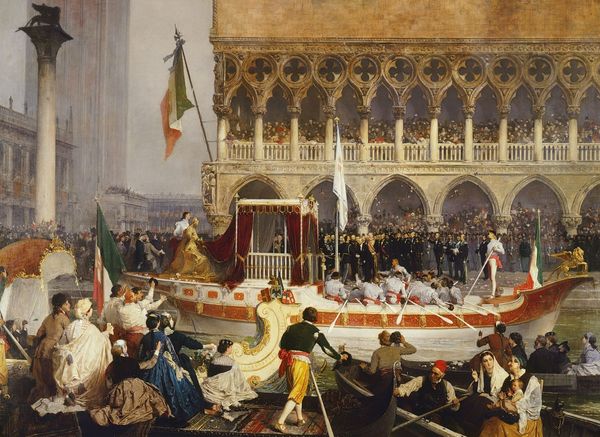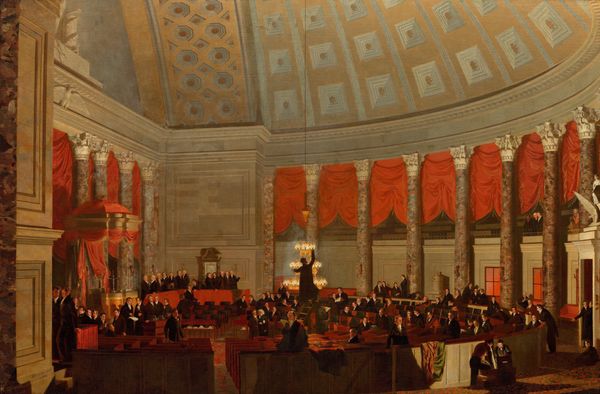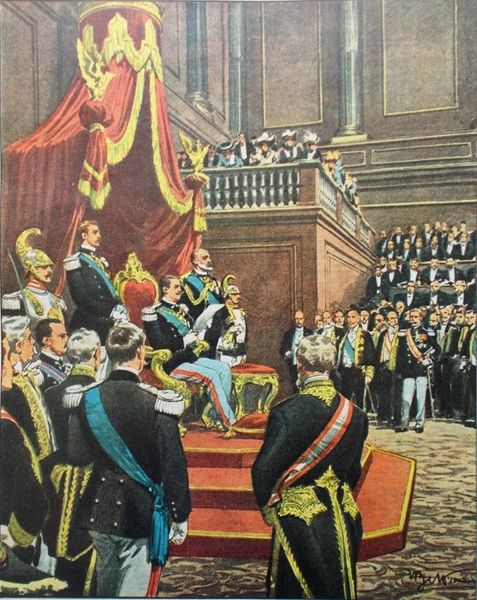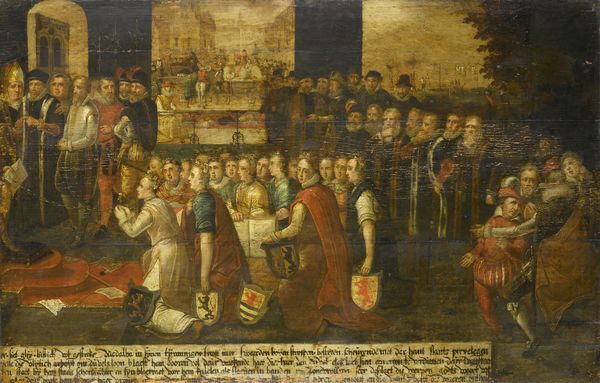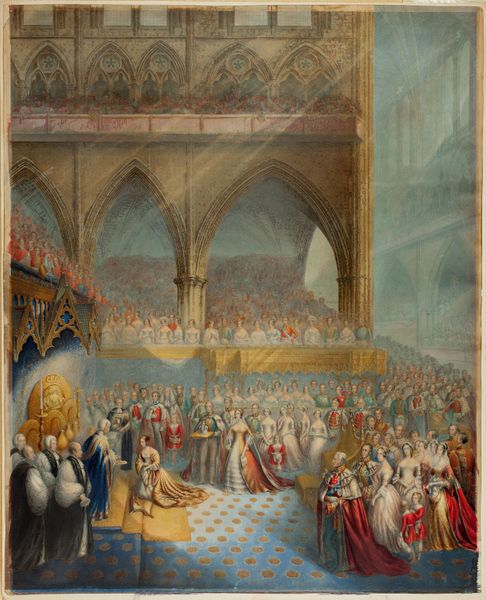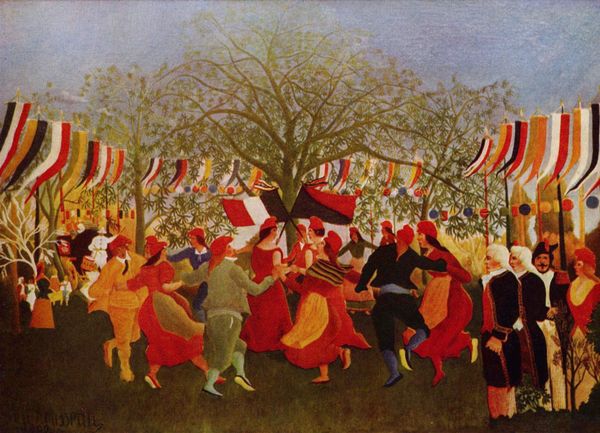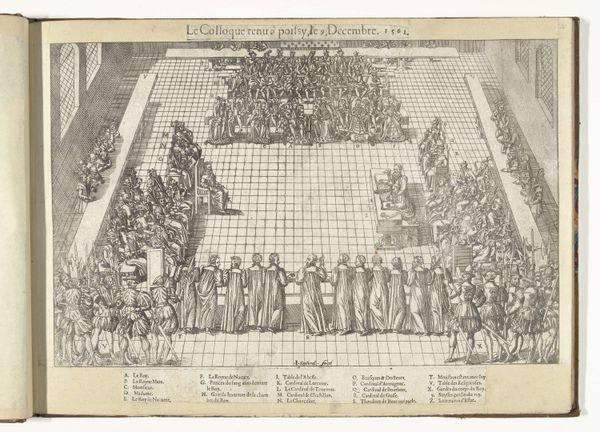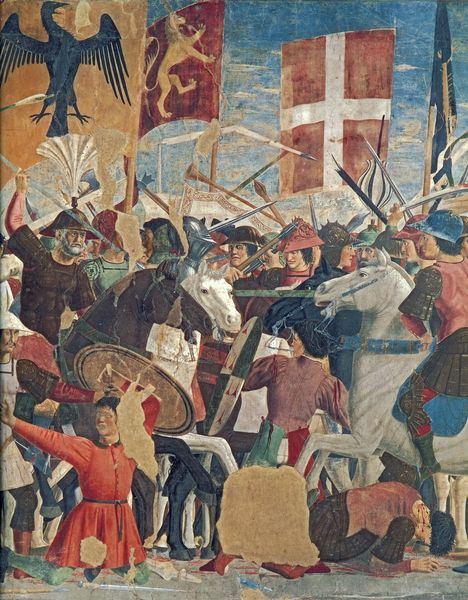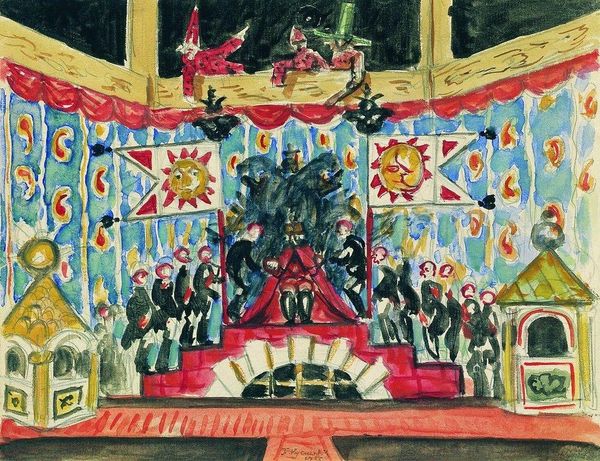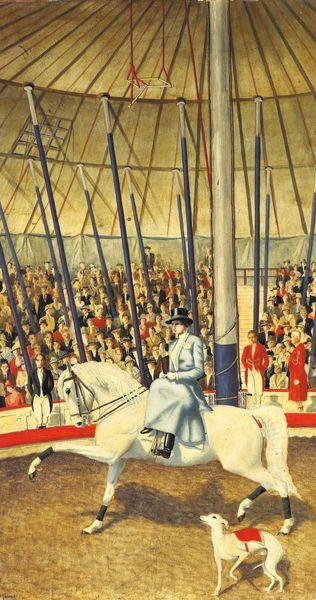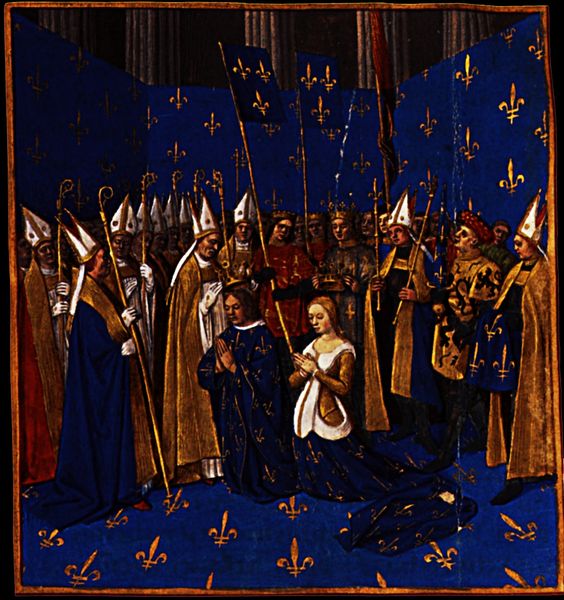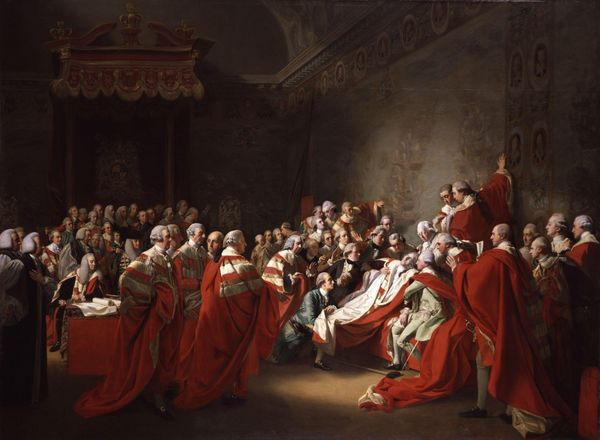
panel, tempera, painting
#
medieval
#
panel
#
narrative-art
#
tempera
#
painting
#
figuration
#
group-portraits
#
history-painting
#
international-gothic
Dimensions: 39.8 x 29.5 cm
Copyright: Public domain
Curator: This painting, crafted around 1460 by Jean Fouquet, is entitled "Cases of noble men and women." It's a tempera on panel piece currently housed in the Bavarian State Library in Munich. Editor: Whoa, that is a *lot* of people. My first thought? It's like trying to find your seat at a really, really crowded historical society meeting, complete with celestial deer flanking what appears to be… wallpaper? The detail is wild! Curator: Indeed. The sheer density speaks volumes about Fouquet's commission. Likely made for a royal patron to depict some major assembly or trial, placing special emphasis on hierarchy. See how meticulously each figure is rendered, despite their numbers? Editor: The blue background speckled with gold really pops against the varied reds, blacks and white garments of the crowd. Do you get the feeling that all these faces are trying to tell different parts of a larger story, yet together seem oddly staged? Almost like Renaissance reality TV! Curator: In a sense, yes! Paintings such as these were integral to consolidating political power during the early Renaissance. Visual chronicles intended to legitimize power structures and record significant events for posterity. Editor: So this piece isn't just about showing *who* was there, but also showing *why* they were important enough to be included. I find it kind of funny how even back then they needed their fifteen minutes! It also reveals a lot of period costume design too! Curator: Precisely. Fouquet skillfully used symbolic color codes and courtly fashion as tools, revealing hidden aspects of social status. Consider the architectural background or royal emblem on top – notice how both frame and almost ‘sanction’ the proceedings before us. It’s quite fascinating. Editor: For all of its controlled composition, and symbolic pageantry, there's still an undercurrent of lively observation. From the musicians near the crowd barrier, to the expression of deep concentration in the people following events carefully... You just get that human element, don't you think? Curator: Yes. Art’s role extended far beyond mere decoration during Fouquet’s time, serving also as vehicles of social order and control and yet... There’s humanity woven right into its warp and weft that will always feel accessible despite changing sociopolitical landscapes. Editor: Totally, the energy of this old room still cracks though those old panels today... What a mad house this proceeding probably must have been in person. Art indeed does immortalize stories... Very different ways from which people initially intended to tell.
Comments
No comments
Be the first to comment and join the conversation on the ultimate creative platform.

